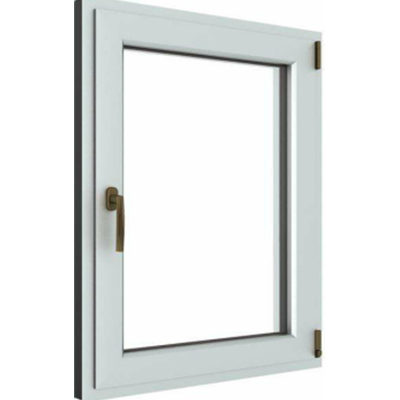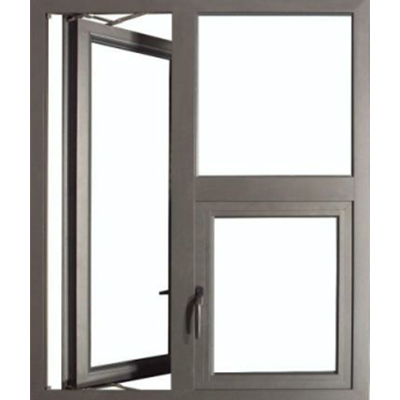At a time when high-rise buildings and industrial facilities have increasingly stringent fire safety requirements, aluminum alloy fireproof windows have become an important part of the modern building fire protection system due to their light weight, high strength, corrosion resistance, and beautiful and practical characteristics. As a key manufacturer in this field, aluminum alloy fireproof window processing plants provide the market with solutions that combine safety performance and architectural aesthetics through material innovation, process upgrades, and intelligent production, promoting the evolution of fireproof windows from “functional products” to “safety artworks”.

Special alloy research and development: High-silicon aluminum alloy (12%-15% silicon content) is used as the substrate. Silicon elements form a glassy oxide layer at high temperatures, wrapping the base metal and delaying the softening and melting process. Experimental data show that the alloy can still maintain structural integrity for 30 minutes at a high temperature of 800°C, which is 3 times more fire-resistant than ordinary aluminum alloys.
Fireproof interlayer technology: Inorganic fireproof core board (such as vermiculite board, perlite board) is embedded in the double-layer aluminum alloy profile, and compounded with polymer adhesive through mechanical bite to form a “metal-inorganic-metal” three-layer structure. Under high temperature, the inorganic core board expands and foams, filling the profile cavity, blocking heat conduction, and making the overall fire resistance limit of the window frame reach 1.0 hours (Class B standard).
Surface protection upgrade: Nano-ceramic coating is used to replace the traditional spraying process. The coating thickness is only 50 microns but can withstand high temperatures of 1200℃. At the same time, it has self-cleaning and UV resistance functions, ensuring that the fireproof window will not fade or fall off in harsh environments for 10 years.

Profile extrusion and precision cutting: Use a 6,000-ton extruder to produce special-shaped fireproof profiles, and the wall thickness accuracy of the profile is controlled within ±0.05mm; equipped with a laser cutting machine and a five-axis machining center to achieve one-time molding of complex window shapes, reduce welding points by 60%, and reduce the risk of embrittlement in the heat-affected zone.
Fireproof glass composite process: Independently developed “vacuum magnetron sputtering + laminated curing” technology, depositing indium tin oxide (ITO) insulation film on the surface of fireproof glass, and accurately controlling the thickness of the fireproof glue layer to 1.2mm, ensuring that the glass does not burst or ignite during the 90-minute fire resistance test, and the light transmittance is still 78%.
Intelligent corner assembly and sealing technology: A hydraulic corner assembly machine is used to achieve 45° precise splicing, and the corner assembly strength is increased to 5000N; silicone fireproof sealant is filled between the window frame and the glass, and the expansion rate in case of fire reaches 500%. With three EPDM sealing strips, the air tightness of the entire window reaches the national standard level 8 (the highest level).

Fire protection compliance design: Equipped with a team of registered fire protection engineers, according to the “General Code for Building Fire Protection”, optimize the window size, opening method and distribution density for customers to ensure the effectiveness of fire protection partitions. For example, in a super high-rise hospital project, the fire resistance time of the evacuation passage was extended by 40% by adjusting the position of the fireproof window.
Construction qualification certification: The installation team is required to hold dual qualifications of “building metal door and window installation” and “fire protection facility construction”, and use BIM technology to rehearse the installation process to ensure that the verticality error of the window frame is ≤0.5mm/m to avoid fire protection failure due to installation deviation.
Digital operation and maintenance platform: Develop a fireproof window status monitoring system. Through the temperature sensor and displacement sensor embedded in the profile, the system can provide real-time feedback on the deformation of the window, the degree of aging of the sealing strip, and other data, warn of potential risks, and reduce maintenance costs by 40%.
The aluminum alloy fireproof window processing factory is reshaping the standards of building fire safety with materials as the backbone, technology as the soul, and service as the pulse. From the formulation research and development in the laboratory to the precision manufacturing in the workshop, from the standardized installation on the construction site to the intelligent operation and maintenance in the cloud, every link embodies the ultimate pursuit of safety. In the future, with the advancement of green buildings and smart cities, the aluminum alloy fireproof window processing factory will continue to explore lightweight, modular and digital technology paths to build a safer and more livable space environment for mankind.